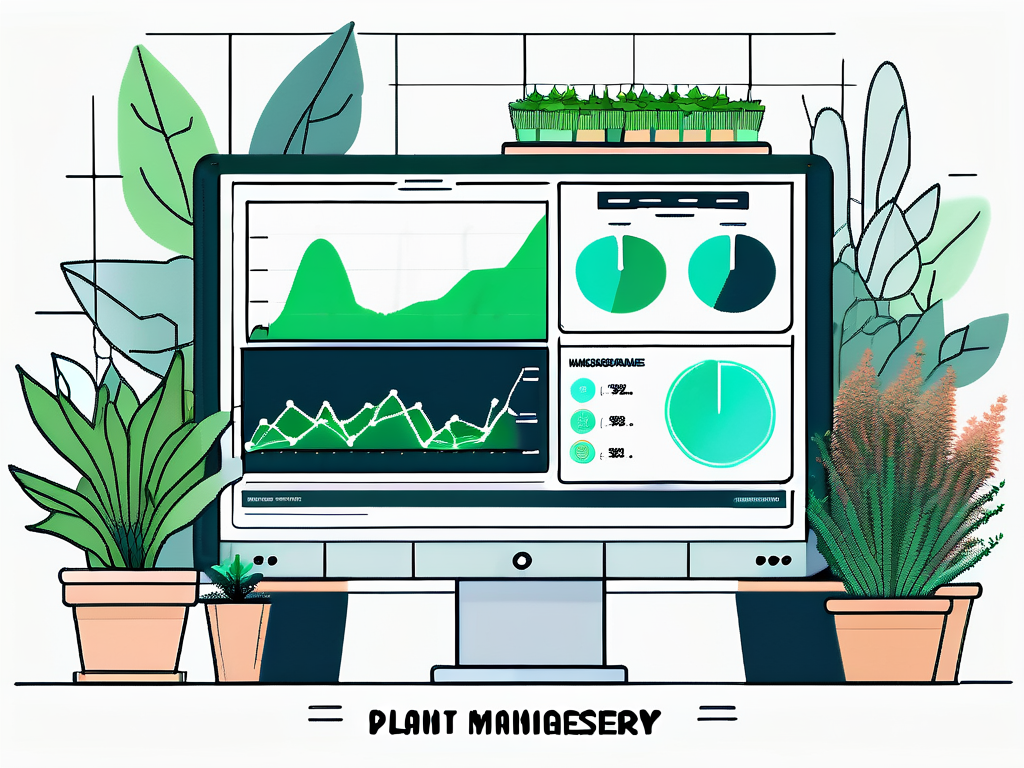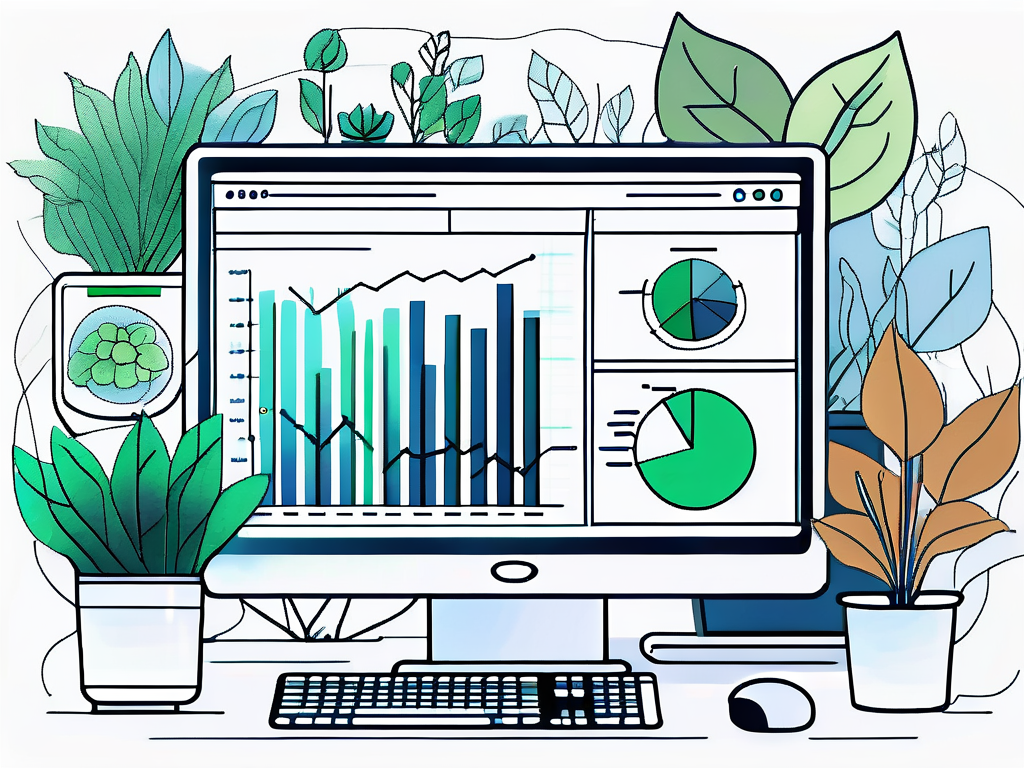
Plant nursery management software is a valuable tool that can help streamline operations, enhance productivity, and improve efficiency in your plant nursery business. In this ultimate guide, we will explore the various aspects of plant nursery management software, from understanding its role in plant nurseries to evaluating different types of software. We will also discuss the benefits of using such software and provide guidance on implementing and maintaining it effectively.
Understanding Plant Nursery Management Software
Plant nursery management software is designed to assist plant nursery owners and managers in organizing and managing various aspects of their business. It provides a centralized platform where you can track and monitor inventory, sales, purchases, customers, and other important data. By automating manual tasks and providing real-time insights, this software can greatly improve the efficiency and profitability of your plant nursery.
The Role of Management Software in Plant Nurseries
Management software plays a crucial role in plant nurseries by offering a comprehensive solution for inventory management, sales tracking, customer relationship management, and financial reporting. It enables you to keep track of your plant stock, manage orders, and monitor sales performance. Additionally, it allows you to build a customer database, track customer inquiries, and manage customer relationships more effectively. By providing an integrated solution, this software empowers plant nursery owners to make informed decisions and optimize their operations.
Key Features of Plant Nursery Management Software
Plant nursery management software typically offers a range of features to support various aspects of your business. Some key features to look for include:
- Inventory management: Easily track and manage your plant stock, including details such as species, quantities, prices, and locations.
- Sales tracking: Monitor sales performance, generate invoices, and track payments to ensure accurate financial records.
- Customer relationship management: Build a customer database, track customer inquiries and preferences, and personalize your interactions.
- Reporting and analytics: Generate comprehensive reports and analyze key performance indicators to gain insights into your business.
- Streamlined purchasing: Simplify the purchasing process by managing supplier information, placing orders, and tracking deliveries.
But that’s not all! Plant nursery management software goes beyond these key features to provide even more value and convenience for your business. For example, some software solutions offer integration with e-commerce platforms, allowing you to easily sell your plants online and expand your customer reach. Others may provide mobile apps, enabling you to access and manage your nursery data on the go, from anywhere and at any time.
In addition, advanced software solutions may offer features like barcode scanning, which can streamline inventory management by allowing you to quickly and accurately track plant stock using barcode labels. This can save you time and reduce errors in the inventory tracking process.
Furthermore, some plant nursery management software may offer integration with accounting systems, making it easier to manage your financial records and ensure accurate bookkeeping. By automating the synchronization of sales and payment data, you can eliminate the need for manual data entry and reduce the risk of errors.
Overall, plant nursery management software is a powerful tool that can revolutionize the way you run your plant nursery. With its comprehensive features and advanced capabilities, it can help you streamline operations, improve customer satisfaction, and boost your bottom line. So why wait? Invest in the right software solution today and take your plant nursery to new heights!
Evaluating Different Types of Management Software
When selecting plant nursery management software, you will come across different types of systems. It is essential to evaluate each type based on your specific needs and preferences. Two important considerations are standalone vs integrated systems and cloud-based vs on-premise software.
Standalone vs Integrated Systems
Standalone software focuses on specific areas of your nursery’s operations, such as inventory management or sales tracking. While these systems may offer targeted features, they can create data silos and hinder efficient communication between different departments. For example, if your nursery uses standalone inventory management software, it may not seamlessly integrate with your sales tracking software, leading to discrepancies in stock levels and potential customer dissatisfaction.
On the other hand, integrated systems provide a unified platform that connects various functions like inventory management, sales, and customer relationship management. This integration allows for better visibility, smoother workflows, and improved data accuracy. For instance, if a customer places an order online, an integrated system can automatically update the inventory levels, trigger a sales order, and notify the shipping department, ensuring a seamless and efficient process.
Cloud-based vs On-premise Software
Cloud-based software is hosted on remote servers and accessed through the internet, whereas on-premise software is installed locally on your own servers. Cloud-based software offers benefits like accessibility from anywhere, automatic updates, and scalability. With cloud-based software, you can access your nursery management system from any device with an internet connection, allowing you to monitor and manage your operations even when you’re away from the nursery.
Furthermore, cloud-based software eliminates the need for expensive hardware installations and IT maintenance. You don’t have to worry about purchasing and maintaining servers or hiring an IT team to manage the infrastructure. Instead, the software provider takes care of all the technical aspects, ensuring that you can focus on running your nursery efficiently.
However, if you require full control over your data and have specific security or compliance requirements, on-premise software may be a better fit. With on-premise software, you have direct control over your data and infrastructure. This level of control can be crucial for nurseries that handle sensitive customer information or operate in industries with strict data privacy regulations. By keeping your data on-premise, you can implement your own security measures and ensure compliance with industry standards.
Benefits of Using Plant Nursery Management Software
Implementing plant nursery management software can bring numerous benefits to your business. Let’s explore some of the key advantages:
Streamlining Operations with Software
By automating manual tasks and integrating various processes, management software can significantly streamline your nursery’s operations. It reduces the time spent on administrative tasks, such as tracking inventory and managing orders, allowing you to focus on core activities like nurturing plants and serving customers. This enhanced efficiency leads to cost savings and improved customer satisfaction.
Enhancing Productivity and Efficiency
Plant nursery management software empowers your staff with the tools they need to work efficiently. It provides them with access to real-time information, allowing them to make informed decisions and respond promptly to customer inquiries. Moreover, with streamlined processes and automated workflows, your employees will be able to accomplish more in less time.
Furthermore, the software can help you optimize your plant inventory by providing insights into which plants are selling well and which ones may need more attention. This data-driven approach enables you to make informed decisions about what to stock, ensuring that you meet customer demand while minimizing waste.
Improving Customer Engagement and Satisfaction
Another significant benefit of using plant nursery management software is the ability to enhance customer engagement and satisfaction. The software can store customer preferences and purchase history, allowing you to personalize recommendations and provide a more tailored shopping experience. By offering exceptional service and meeting individual needs, you can build long-lasting relationships with your customers and increase loyalty to your nursery.
Implementing Plant Nursery Management Software
Implementing management software in your plant nursery requires careful planning and execution. Follow these steps to ensure successful implementation:
Steps to Successful Software Implementation
- Define your goals: Clearly identify the objectives you want to achieve with the software, such as improving inventory accuracy or increasing sales.
- Choose the right software: Research and select a software solution that aligns with your specific requirements and budget.
- Train your staff: Provide comprehensive training to your employees to ensure they can effectively use the software and understand its benefits.
- Migrate data: Carefully migrate your existing data into the new software, ensuring accuracy and integrity.
- Gradual rollout: Implement the software gradually in different departments or areas of your nursery to minimize disruptions and allow for fine-tuning.
- Monitor and evaluate: Continuously monitor the performance of the software and gather feedback from your staff to identify areas for improvement.
Overcoming Implementation Challenges
Implementing management software can present certain challenges, such as resistance to change or technical difficulties. The key to overcoming these challenges is effective communication and support from management. Ensure that your employees understand the reasons for implementing the software and the potential benefits it brings. Provide ongoing support and address any concerns or issues promptly to ensure a smooth transition.
Maintaining and Updating Your Management Software
Regular maintenance and updates are crucial for the smooth functioning of your plant nursery management software. Consider the following:
Importance of Regular Software Maintenance
Performing regular maintenance tasks, such as data backups, system optimizations, and security checks, helps prevent potential issues and ensure optimal software performance. Schedule routine maintenance to keep your software running smoothly and minimize the risk of data loss or system failures.
Keeping Your Software Up-to-Date
Software updates often include bug fixes, security patches, and new features. It’s essential to regularly update your management software to leverage these improvements and stay protected against emerging threats. Stay informed about software updates and evaluate their relevance to your nursery’s operations before applying them.
In conclusion, plant nursery management software is a valuable asset that can revolutionize your nursery’s operations. By understanding the role, features, and benefits of this software, selecting the right type for your business, effectively implementing it, and maintaining it appropriately, you can optimize your nursery’s performance, improve productivity, and ensure long-term success.







